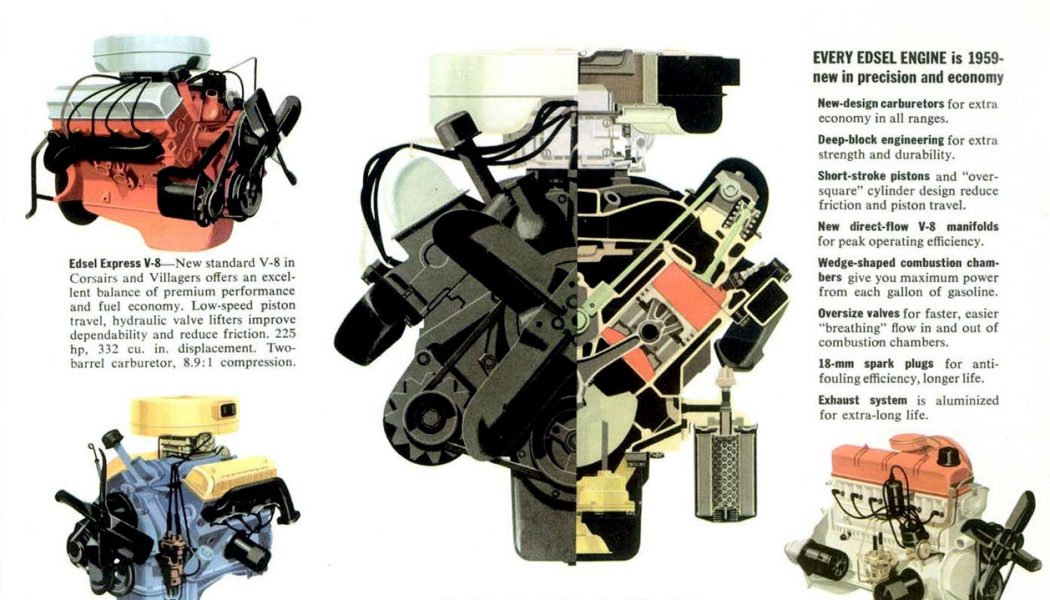If you look at any “Worst Cars Ever LOL” lists around the internet (or even in books), you will inevitably find a photo of the Edsel’s schnoz featured prominently. Many remember Ford’s failed marque solely as a failure for sundry reasons, but few remember the details of the Edsel lineup itself. That includes the 410 cubic-inch Edsel-475 V-8 in the top-range Corsair and Citation models, which is worth a few words.
We won’t spend a whole lot of time talking about why the Edsel failed, but the year-long “slam dunk” marketing campaign that anticipated the car’s release flopped. You can read entire books about that if you want, but the engines designed for the Edsel’s 1958 release played a central part in how Ford hoped it would appeal. Yeah, it’s a stretch to call the Edsel aesthetically beautiful, but a factory engine option with 375 horsepower and 475 lb.-ft. of torque was something pretty grand in 1958.
That option for the larger Corsairs and Citations displaced 410 cubic inches. While it wasn’t the largest engine in Ford’s inventory—Lincoln and Mercury had a 430—the big Edsel option did give real power to a brand name that was supposed to sit between Ford and Mercury in the company hierarchy.
The 410 made good power and feature advanced engine-idle controls, but it lasted even less time than the Edsel nameplate itself. The big-displacement 410 disappeared from the order sheet for 1959 while Ford shifted away from horsepower and toward economy, offering a straight-six, a 292 cubic-inch Y-Block, and the “Super-Express” 352 instead.
Ironically, the Edsel’s engine legacy is not the 410, but rather the downmarket 361 (called the Edsel-400 in the marketing lingo), the Express 332, and the Super-Express 352. Those engines were early versions of Ford’s FE (“Ford-Edsel”) V-8, which was totally unrelated to the Edsel 410. The early Edsel FEs would become the basis for many of Ford’s most memorable engines, include the single-overhead camshaft (SOHC) 427 and the 390 found in many classic Ford muscle cars.
By 1960, Edsel had thrown away the horrendous horseshoe grille and made an attractive car, but it was too late by then. There were no ’61 Edsels. Like most historical oddballs, the Edsel is celebrated as a collector and a classic today. It’s hard to know exactly what its legacy is, aside from a blueprint for what not to do with a new car.
This article originally appeared on Roadkill.com.










